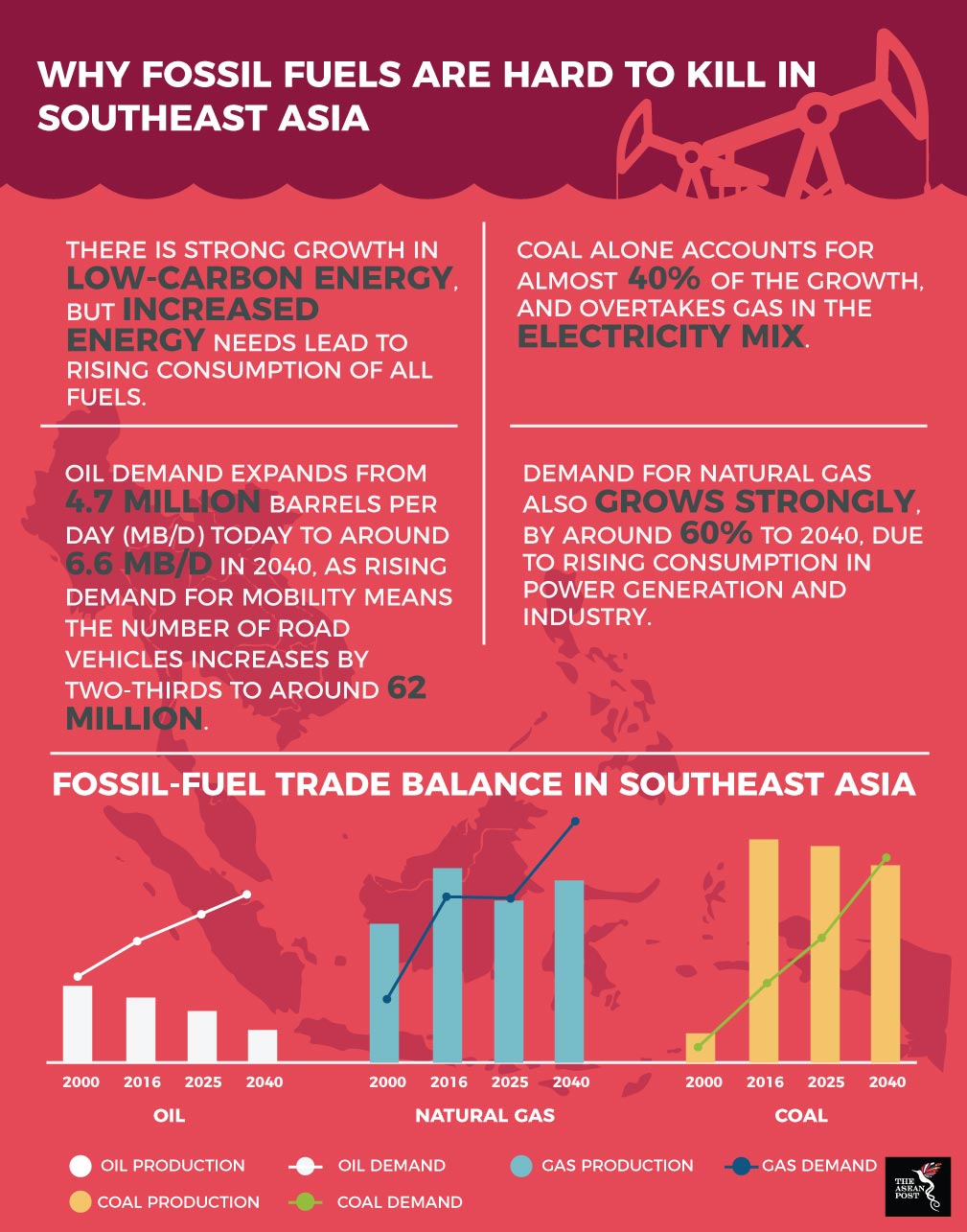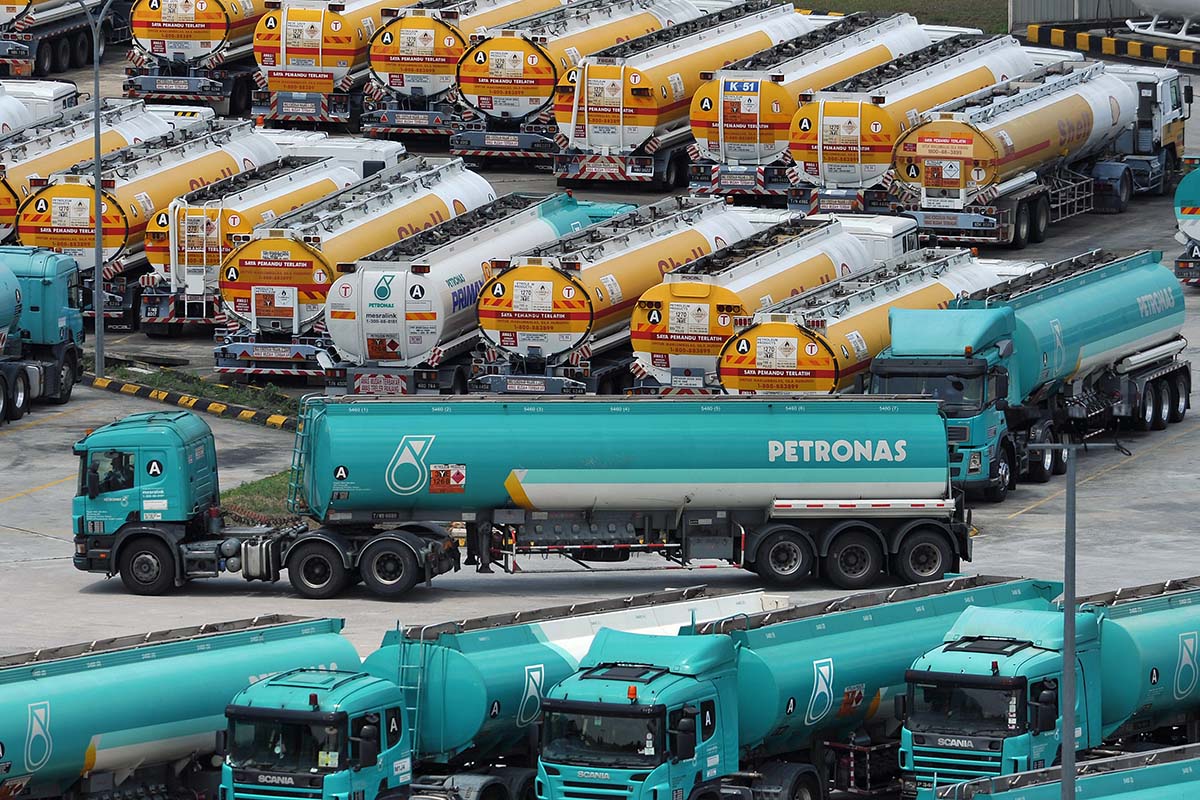The Association of Southeast Asian Nations (ASEAN) has answered the clarion call for the global shift towards renewable energy, in line with the pursuit of reducing greenhouse gas emissions and combatting global warming. In 2017, ASEAN and the European Union (EU) jointly released a statement reaffirming their commitments to the Paris Agreement to keep the average global temperature rise to below 2°C above pre-industrial levels and to pursue efforts to limit the temperature increase even further to 1.5°C above pre-industrial levels.
ASEAN faces an uphill task given that most of its member states’ economies are still at a developing stage and are growing rapidly. To feed this growth, ASEAN economies need energy that is easily available and cheap and forecasts by the International Energy Agency (IEA) show that Southeast Asia’s energy demands are expected to increase by over 80 percent between 2011 and 2035.
A brown future against a green vision
The dominance of fossil fuels in ASEAN’s primary energy mix is unlikely to change going into the future although ASEAN projects a vision to achieve 23 percent renewables in its total primary energy mix by 2035. Even under a best-case scenario, the share of renewables will only increase to about 30 percent by 2040 according to the ASEAN Centre for Energy (ACE).
In 2015, fossil fuels represented 75.2 percent of the total primary energy mix. Leading the charge was oil (33 percent), followed by natural gas (23.7 percent) and finally coal (18.5). Renewables like solar, hydro and wind constituted only 13.6 percent of the energy mix. The remainder was represented by traditional biomass like charcoal and firewood used by those living in rural areas which is fast losing relevance, reflective of the shift towards more modern sources of energy.
In 2016, this trend continued. According to the IEA, although the share of fossil fuels in the primary energy mix dipped to 73 percent, it still constituted a significant chunk of the overall energy landscape in Southeast Asia. Besides that, as more and more people living in rural areas gain access to electricity, their dependence on traditional biomass as an energy source will decrease. Herein, lies the challenge for electricity sources – whether to power them using traditional fossil fuel guzzling power plants or switch to a more renewable source.

Source: International Energy Agency (IEA)
Why won’t fossil fuels die?
Fossil fuels that would see the highest increase in usage in the next few decades are coal and natural gas. Oil will slip down in the overall energy mix rankings due to its price volatility and other environmental factors. However, coal and natural gas are more resistant to these issues.
Coal is a cheap source of fuel although falling rates of solar photovoltaic panels and affordable small wind and hydro installations may affect its price competitiveness. Besides that, natural gas is also touted as a viable alternative – cleaner than other sources of fossil fuels. According to the Union of Concerned Scientists, natural gas emits 50 to 60 percent less carbon dioxide than coal.
However, thanks to technology, coal fired power plants are now becoming more efficient and – quite counterintuitively – more environmentally friendly.
Ultra-supercritical power plants are heralded as coal’s answer to renewable energy sources. Such power plants are predicated as high efficiency low emissions (HELE) solutions which are also effective in capturing lost heat during the electricity generation process, thus improving thermal efficiency.
Malaysia is home to Southeast Asia’s only two ultra-supercritical power plants. Nevertheless, the Philippines has jumped on the bandwagon and is now working with Korean Electric Power Corporation (Kepco) to build a 1,000 megawatts (MW) ultra-supercritical power plant which would power most of Luzon Island.
However, this doesn’t tell the full story of fossil fuels. The stories of clean coal and clean natural gas often negate the environmental damage caused by its extraction process. When compared to solar or wind energy, fossil fuels are still more hazardous to the environment but the lure for Southeast Asian countries lies in its lower costs to deploy and effectiveness. Consequently, for green energy to take the fight to fossil fuels and win, it must focus on these areas.
